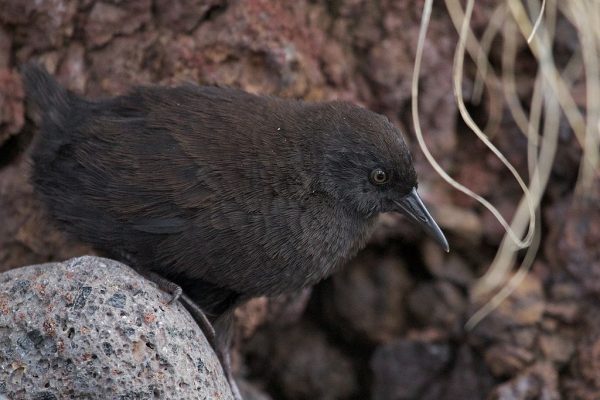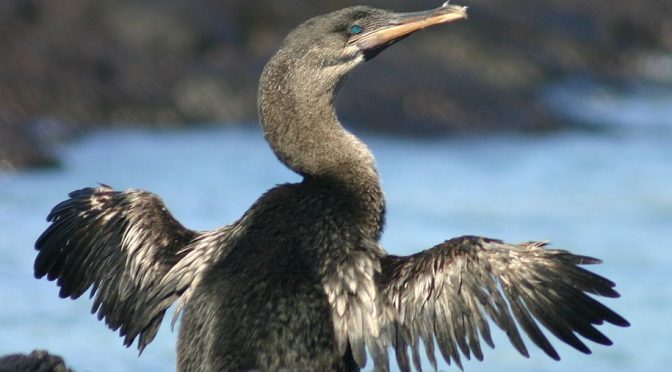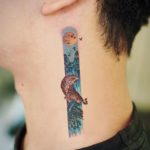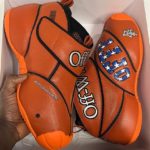Take a moment and look around you. Look at what nature has to offer you. Let’s start with the most common of our senses- sight. What can you see? The burning sun and the white moon, the bright stars thousands of light years away, the huge world expanding into galaxies and universe and the deep oceans. Are you able to hear all those distinctive noises? High-pitched and low-pitched human voices, the birds chirping in the morning and the nightingale seldom singing sweetly to itself. Can you feel something extraordinary, as extraordinary as the creations of God that make you marvel at His powers? The world is full of numerous astonishing things with characteristics that you cannot help simply being amazed at.
One of the many creations is that of birds. Generally you can spot them easily, some are rare. Some you can pet, others may pose a danger to your life. From a sparrow to an ostrich, you can find a lot of them in varied sizes, colors, features and characteristics. Surely, you must be familiar with the phrase, ‘fly like a bird’. All birds are supposed to be able to fly, right? But have you ever thought that it might not just be true? That there may exist species of birds- yes, creatures with wings- that ironically are just unable to spread their wings and reach the heights of a sky? Nonetheless, they have qualities that will shock you.
Check out these creatures, that are so rare yet so beautiful with their unique appearances and characteristics and discover more about the precious little surprises God has left for you on this planet.
Titicaca grebe:
These beautiful ducklings are found in the Titicaca Lake, as implied from their name. They also referred to as Titicaca flightless grebe or short-winged grebe because of its inability to fly. They are mediocre in size, weighing up to 600 g and feeds on extremely tiny fish. Its streaked feathers- brown from the head turning into gray around the belly and white-colored throat all the way down to the breast- make it look adorable. Although it cannot fly, it can swim really fast (3.5 km/hour) and dive brilliantly. Inhabiting a few lakes near Titicaca, its population was not scarce up to now when fishermen have started catching these from the lakes which are why it is now counted amongst endangered species.
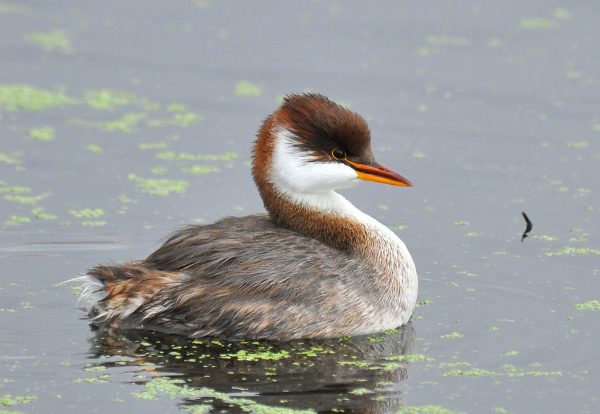
Guam rail:
Native to Guam, these brown flightless birds existed in a great number till 1960’s when, unfortunately, brown tree snakes took over the place which fed on them. Gradually, their number decreased so much that they were enlisted amongst the endangered species. In the attempt to keep the species alive, a few of them were captured to be bred in zoos and other specific breeding areas. They are basically brown in color with gray stripes on the head and chest. They are medium-sized, slightly tall and compressed, and prefer vegetables to live on rather than insects and other things. As they are unable to fly, they nest on the ground which is why they are an easy catch for the predators. It takes six months to mature and produces around 10 clutches over a year, as per a breeding house’s observation.
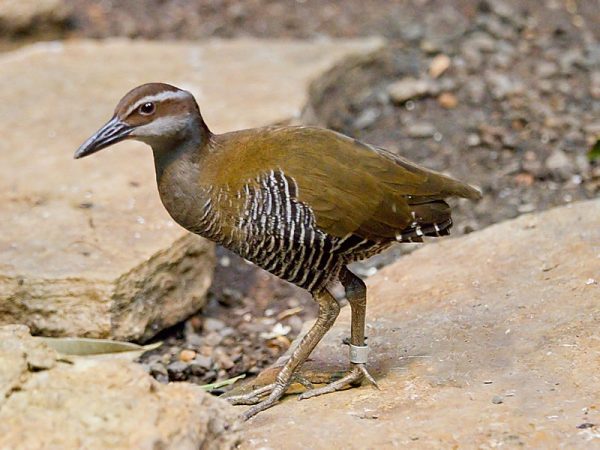
Campbell teal:
Properly named as Campbell Island Teal, they got their name from the small island on which they were discovered, Campbell Island of New Zealand. These small brown ducks with a green tinge at the back and black/sepia heads are one of the rare birds that are unable to fly. As the Norway Rats invaded the island, the species were endangered as they ate their eggs and chicks. For a century, it was believed that the teal has gone extinct. Later, it was found that they had found refuge in a rat-free islet, Dent Island, near the island, but their population had greatly reduced. To prevent their extinction, a few of them were captured and bred under extreme care at Mt Bruce Wildfire Centre. Although there have not been many improvements but there is still a hope for these rare creatures.
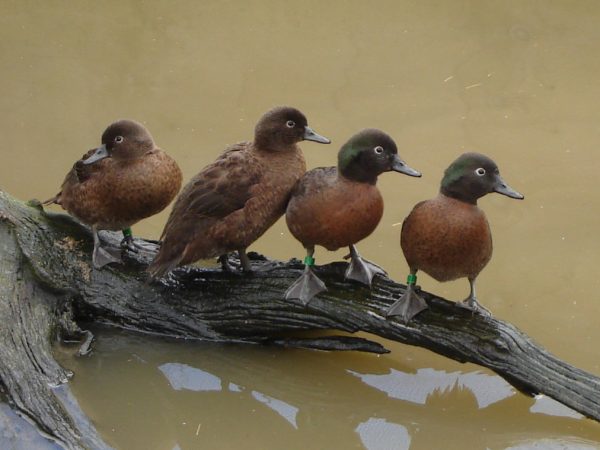
Kiwi:
Kiwi is a famous bird, but the majority does not know about its special features. Originated from New Zealand, it’s the size of a chicken and is further categorized into five more species of its kind. However, some things are mutual to all, that is, they are flightless and are nocturnal creatures. Also, the produce the largest eggs in relation to body size of birds. Over the years, its wings are becoming hardly visible, probably because they are basically useless. They have long pointed beaks and dark gray feathers. A bulk of them inhabited the forests of New Zealand, but as a consequence of deforestation and introduction of mammalian predators, it is now becoming scarce in population. Kiwi is the national bird of New Zealand.
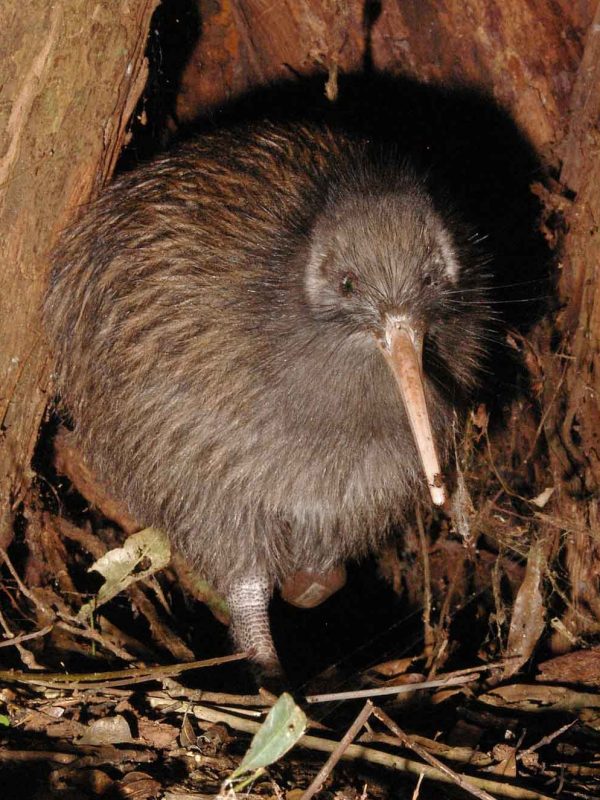
Kakapo:
Bred in New Zealand, Kakapo is usually called the ‘owl-parrot’ because of its unique features that it seems to have inherited from owls and parrots simultaneously. However, it is basically categorized as a parrot, though one that cannot fly. Its wings keep it balanced to walk around as it is known to be the heaviest parrot in the world, weighing around 2-4 kg. Its stiff legs help it to climb heights easily. Life expectancy of this species is believed to be 95 years. With only a hundred of them all over the world, they are on the verge of extinction. Adding to its distinctiveness is the fact that these birds freeze when they sense danger and their green feathers with black spots help them to camouflage perfectly, hence protecting them from becoming a prey to vicious animals. Naturally, like owls, they are nocturnal, hiding in the trees in the morning and coming out only at night time. Also, they tend to smell just like their nature, sweet and friendly.
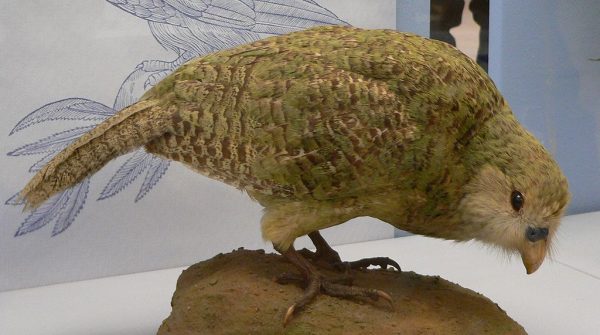
Cassowary:
Found in New Guinea and Australia, the cassowary further has three species- the southern cassowary, northern cassowary, and the dwarf cassowary. It is nothing like the fragile kakapo. Instead, it is a bird cum baby dinosaur that can be dangerous to interact with even for humans. Despite the fact that it cannot spread its wings and fly around, it definitely has some features that make it strong enough to survive. Having strong legs and huge claws, it can run faster than any other bird, making 31 miles per hour. Also, it the second heaviest bird (first one being Ostrich) and is known as the double-wattled cassowary as it has two long wattles hanging from its neck. It is as intimidating as it looks!
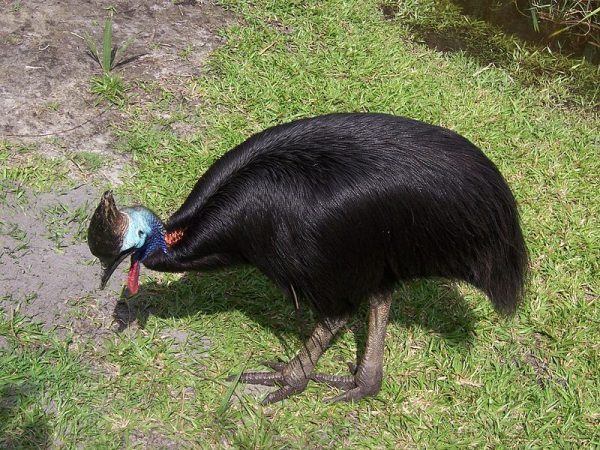
Tasmanian nativehen:
As you can guess from its name, the bird belongs to Tasmania. It is another bird which cannot fly. But this is not the only thing that makes it such a rare creature. With the looks that mostly resemble that of a hen except that it has red eyes, strong legs and claws and olive-brown feathers with a patch of white on the breast, it can run really fast enough to cover 30 miles per hour. Unlike other rare birds that are not blessed with the ability to fly, these birds are not in the slight, vulnerable or endangered. The area they inhabit is quite favorable for them, providing them food to their fill. They stick around in a group not letting anyone near 5 acres of land around them.
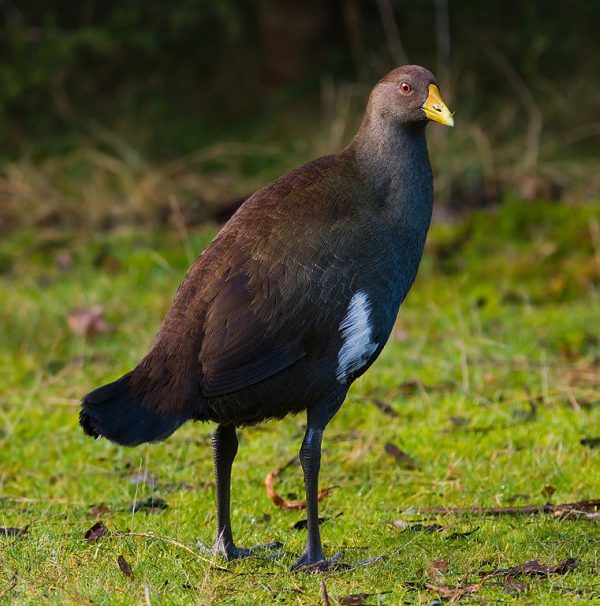
Weka:
Also known as Maori hen or woodhen, this brown and gray feathered bird belongs to New Zealand. It is the size of a chicken and are basically omnivorous, eating both insects and fruits. Weka is a very secretive and shy species you can hardly spot them frolicking around. It uses it long and sharp beak as a weapon against enemies. The breeding time for them is usually between August and January. It has been classified as vulnerable species due to a lot of reasons, such as, newly introduced mammalian predators (cats and dogs), changes in the habitat (deforestation and drought) followed by scarcity of food. Some of these birds find their way to the roads where they get hit by vehicles. Aims to provide the optimal conditions for breeding have been initiated by The Department of Conversations.
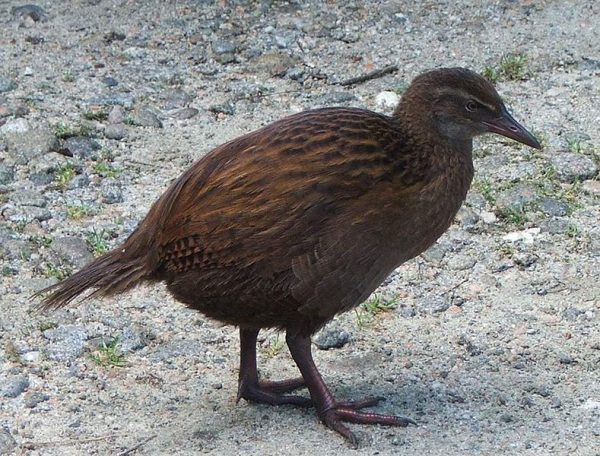
Takahe:
New Zealand houses this beautiful creature with a green back and royal blue feathers all over the body. Pretty much like a hen, it weighs around 5-6 pounds. It was believed to have been completely extinct till 1948 when it was miraculously rediscovered. However, factors like hunting, loss of appropriate habitat and newly introduced predators have not let these flightless birds grow large in number. It eats grass and insects. It is known to be monogamous, sticking to one partner for all of their life (which is approximately a little over 12 years). The chicks remain with their parents for at least 18 months and help to look after the newly hatched. But their breeding rate is not exactly superb which is why some are kept captive by breeding houses.

Flightless cormorant:
Being flightless, this is a rare cormorant. It is also known as Galapagos cormorant as it is found on Galapagos Islands. Its wings to body ratio are abnormal due to which it cannot fly. But it has webbed feet that enable it to swim at least 300 feet offshore. It feeds on marine flesh. Its feathers are a streak of black to brown with small beetle-like eyes. Breeding is common between the months of July and October when the weather is the coolest. It is the best time for them to mate and gain health. Previously they have not faced any danger to their existence but now a few predators like cats, dogs and pigs have been introduced to the Island.
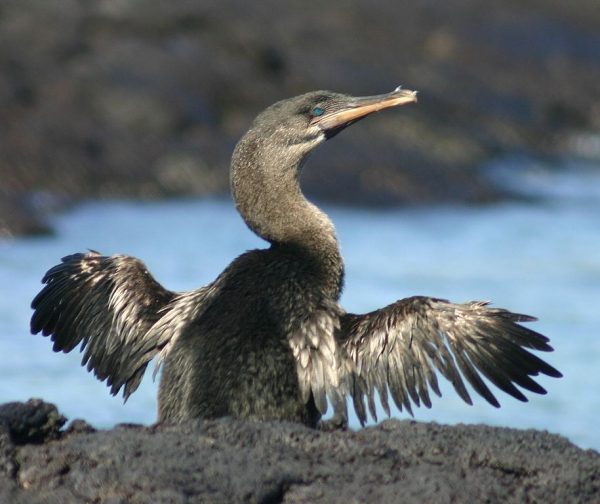
Fuegian steamer duck:
This species is found at the rocky shores of South America. There are basically four types of Fuegian ducks and only one is able to fly. These ducks are probably the largest and heaviest of all the ducks over the world, weighing anything between 7.7-15.4. Adding to its unusual characteristics is the fact that these can swim really fast and as they paddle along they flap their wings too, which is one of the ways to fight any sort of predators (foxes and gulls) too. They are aggressive, gray birds that feed on small fish. The ducklings, however, are fed snails and insects. The breeding season starts in September and lasts till January to lay an estimate of 9-11 eggs.
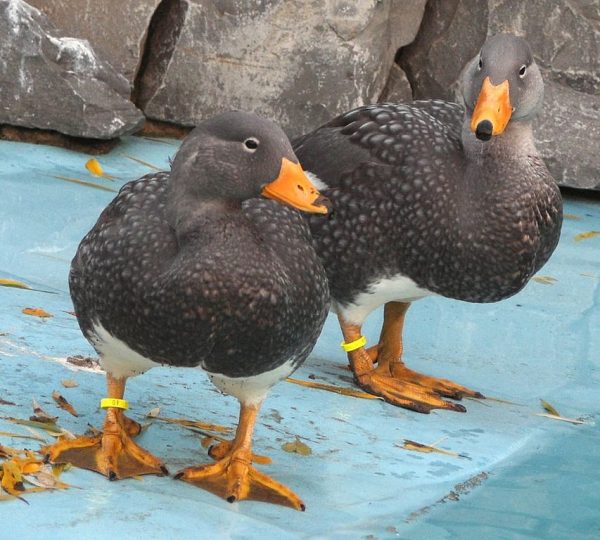
Inaccessible Island rail:
As per its name, the island these rusty brown-grey birds dwell on is literally inaccessible. Which is why these birds are not facing any sort of danger to their existence, despite being able to fly. They are the tiniest birds living on planet earth with an average weight of 30 g. living on earthworms, moths, berries and seeds, the rail has completely dominated this island. The only risk their life may be exposed to is that if the island experiences a natural disaster or it is introduced to unknown predators, these birds will cease to exist. Therefore, a few precautionary measures are being taken to ensure that if such a catastrophe occurs, the birds do not become extinct.
